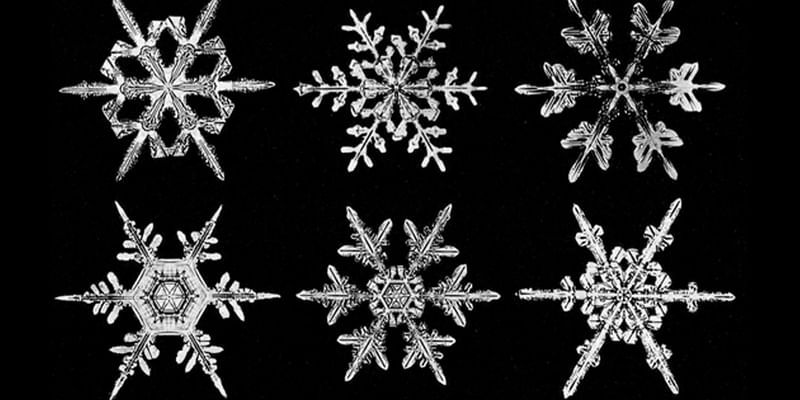
Snowflakes, nature’s intricate masterpieces, have captivated human imagination for centuries. Each snowflake is a unique crystalline sculpture, a microcosm of symmetry and complexity. Their fleeting existence and delicate beauty make them a symbol of the transient yet profound wonders of nature. Lets delve into the mesmerising world of snowflakes, exploring their formation, structure, and the cultural significance they hold.
The Birth of a Snowflake
The journey of a snowflake begins in the clouds, where temperatures plummet below freezing. Here, water vapor condenses around microscopic particles—dust or pollen—forming an ice crystal. As the crystal falls through the cloud, it encounters varying conditions of humidity and temperature, each influencing its growth and shape. The path of a snowflake is a dance with the elements, with each turn and twist adding to its complexity.
A Symphony of Shapes
Snowflakes are renowned for their six-sided symmetry, a result of the molecular structure of water. However, their forms vary from simple hexagonal plates to intricate dendrites. Temperature plays a pivotal role in shaping these icy gems. At around -2°C, thin plate-like crystals form; at -15°C, needles emerge; and intricate dendrites appear near -25°C. Despite their diversity, snowflakes adhere to a principle of symmetry, a trait that has long intrigued scientists and artists alike.
Fleeting Beauty, Eternal Fascination
The fleeting existence of snowflakes, melting shortly upon touching the ground or a warm hand, adds to their allure. This ephemeral quality has made them a metaphor in literature and art for the transient nature of life and beauty. The Japanese concept of “Mono no aware,” the awareness of the impermanence of things, finds a poignant symbol in the snowflake.
Snowflakes in Science and Art
The study of snowflakes, or nivology, offers insights into meteorological phenomena and climatic conditions. Wilson Bentley, the first to photograph snowflakes in the 19th century, revealed their astonishing diversity, propelling further scientific and artistic exploration. Today, snowflakes continue to inspire art, from photography to literature, symbolising purity, individuality, and the intricate balance of the natural world.
Snowflakes are not just winter’s decoration but are natural marvels that embody the beauty of nature’s design. Their intricate structures and ephemeral beauty continue to inspire awe and wonder, reminding us of the delicate and fleeting nature of life itself.










